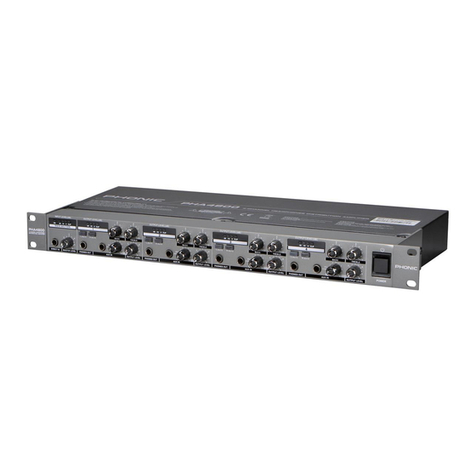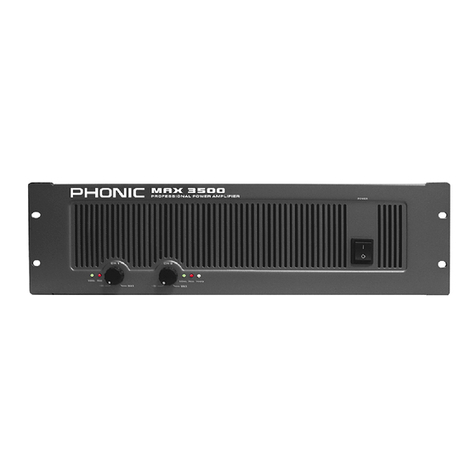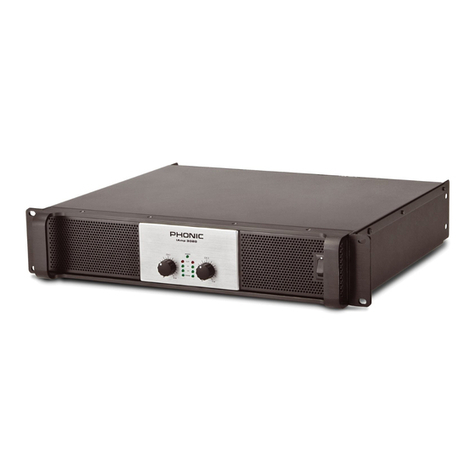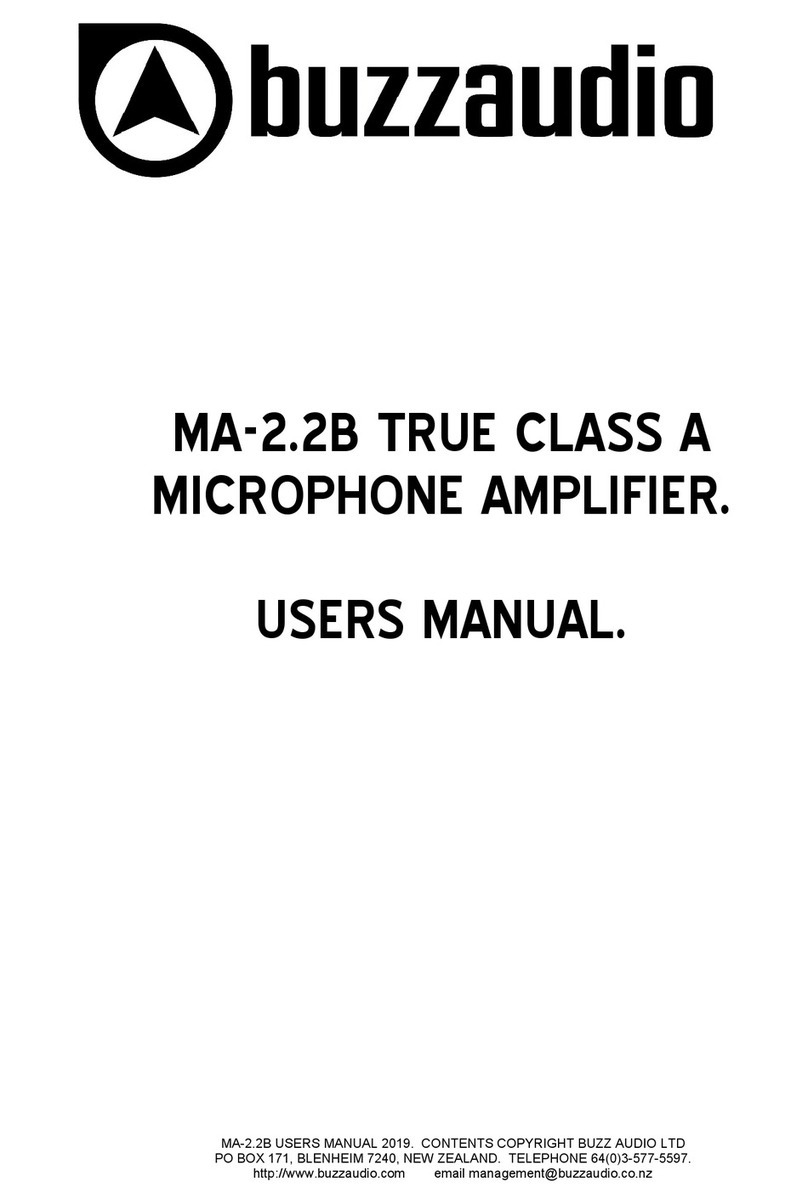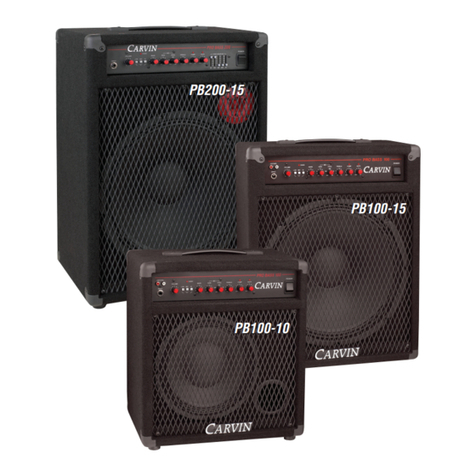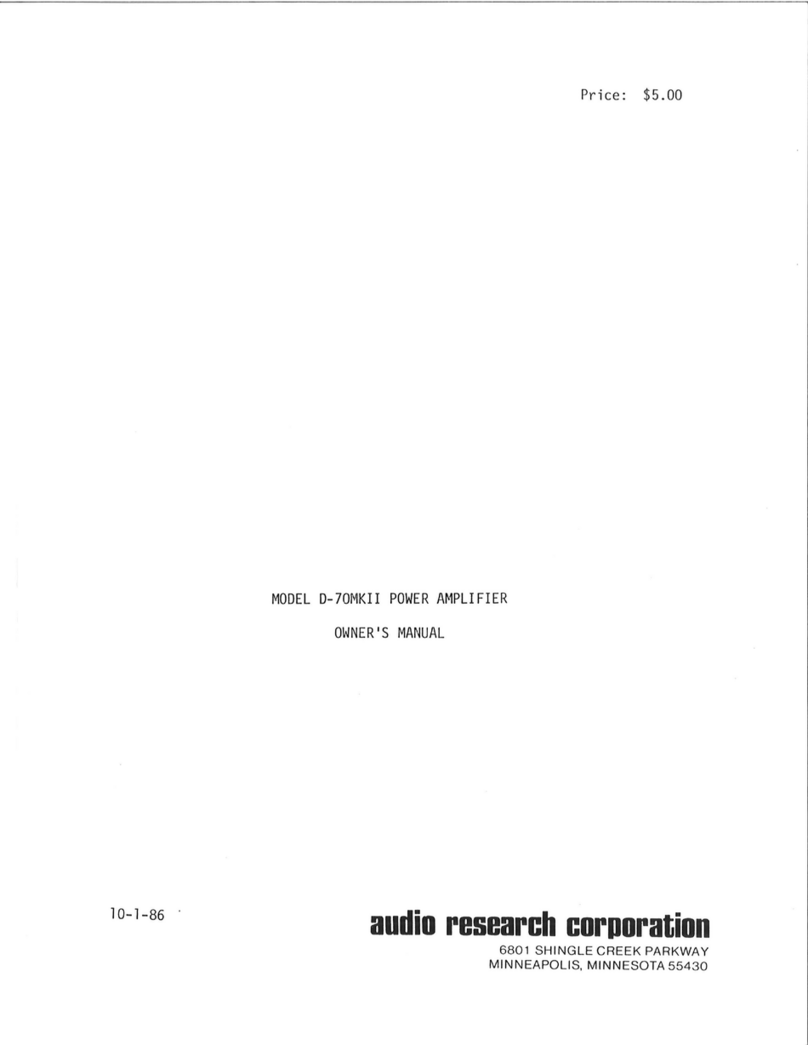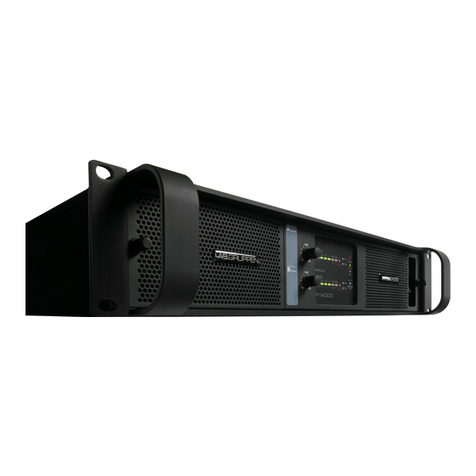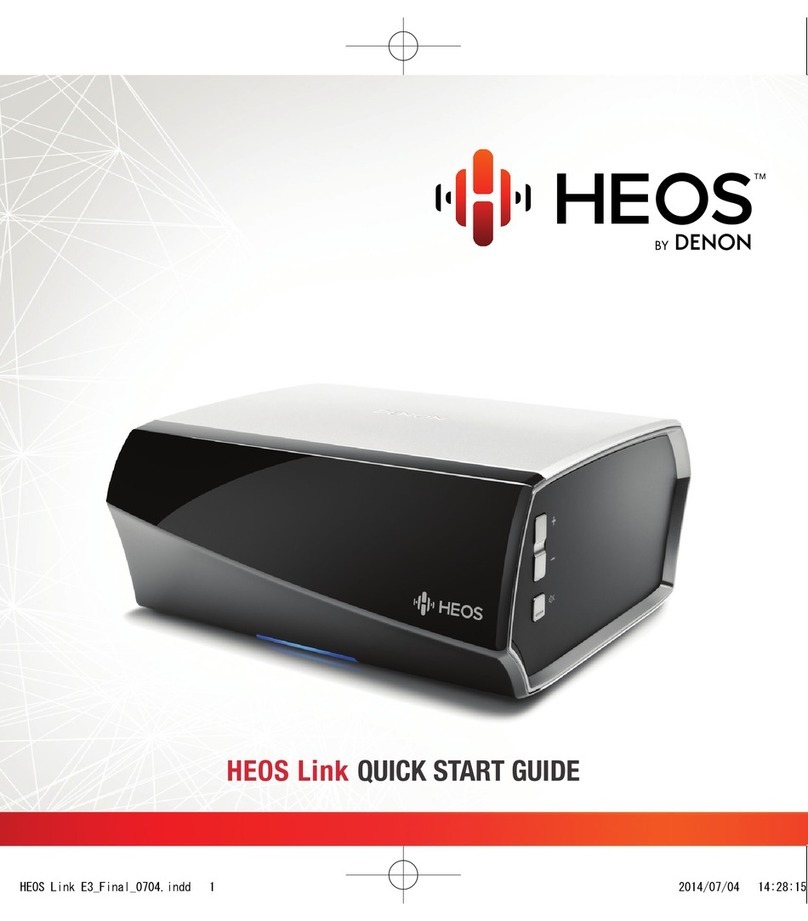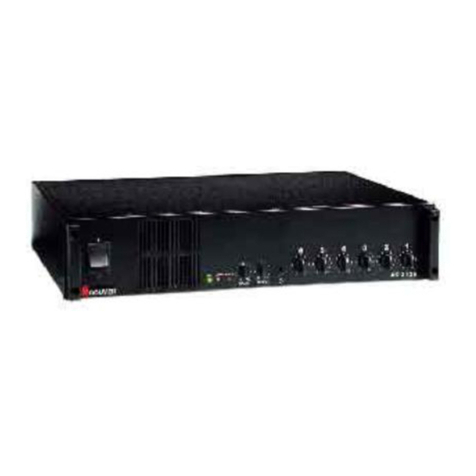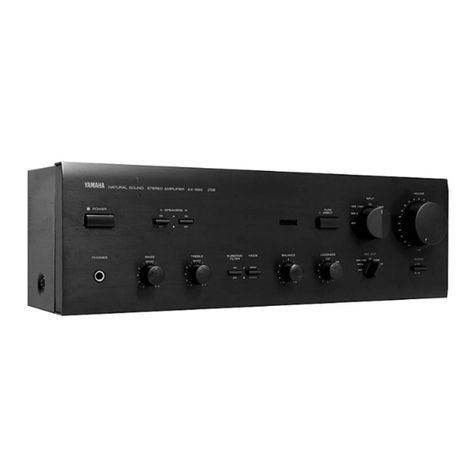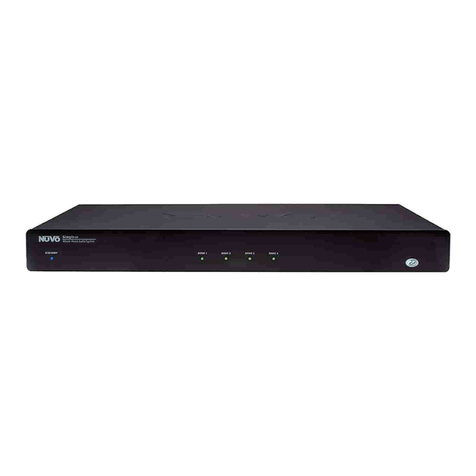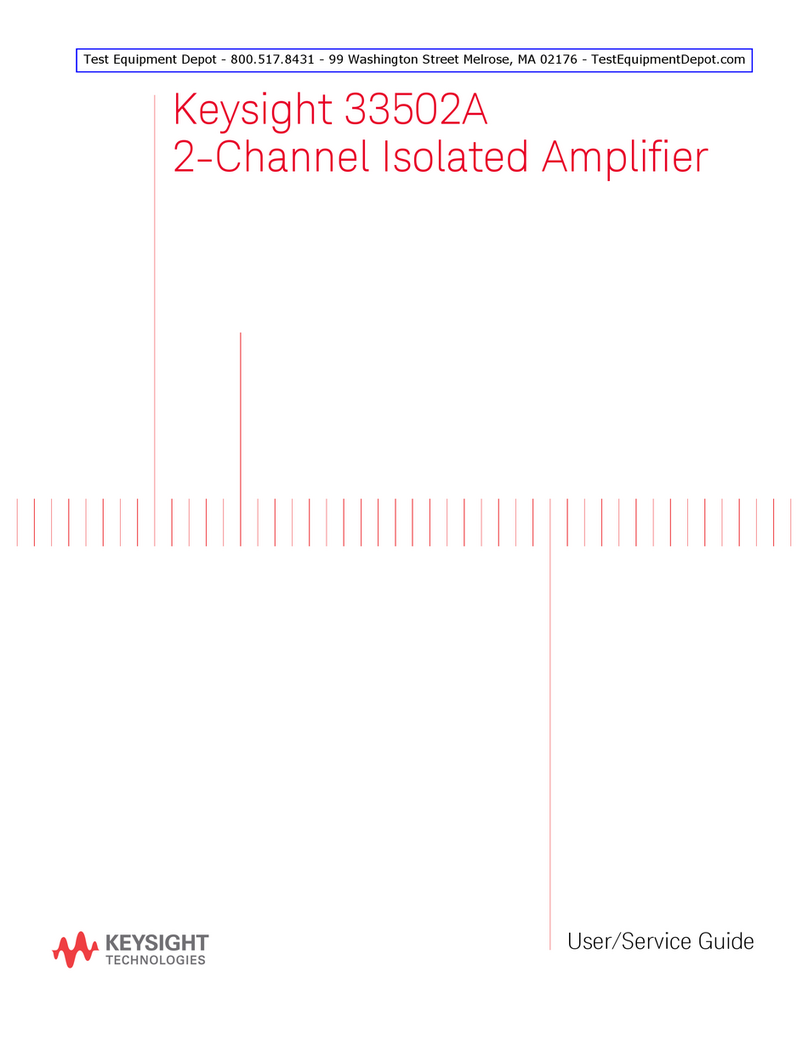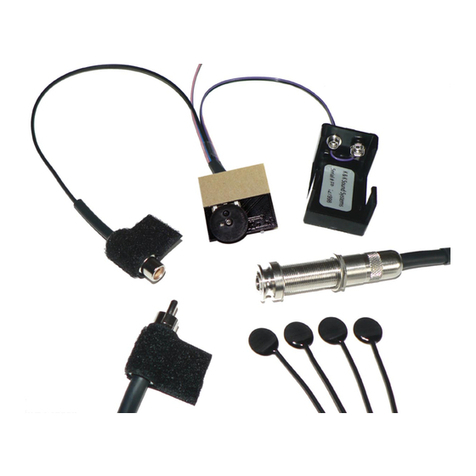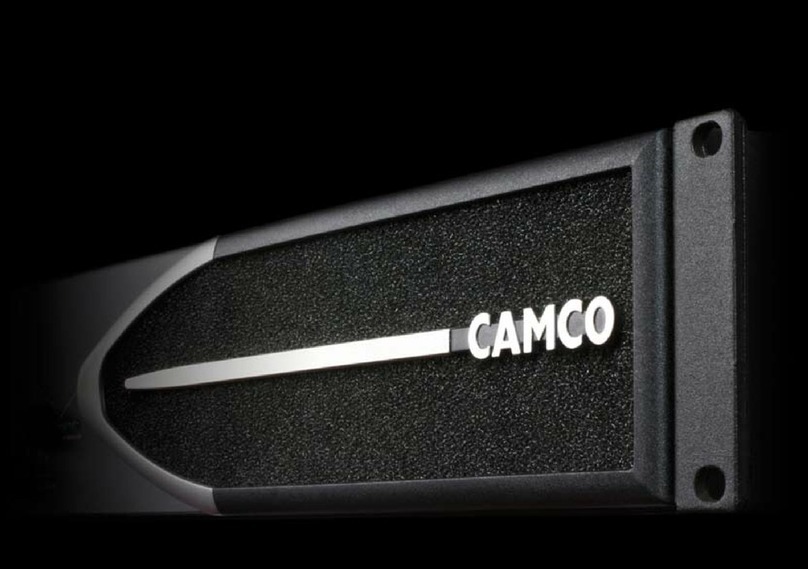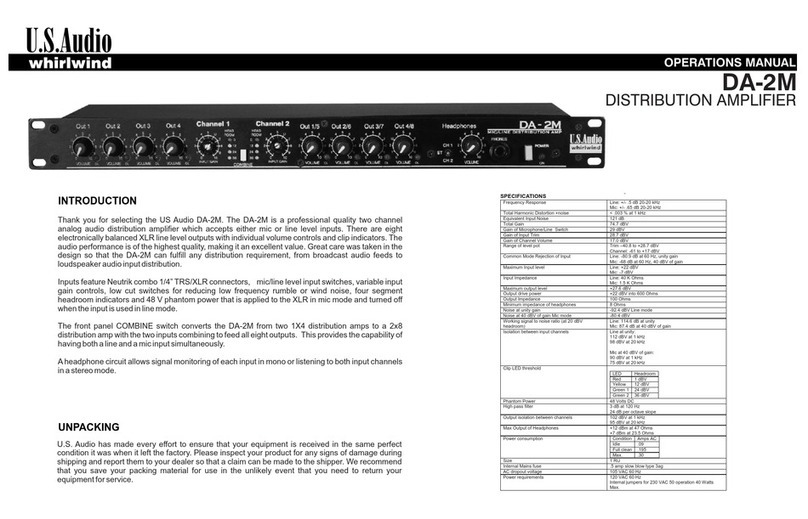Phonic MAX 2500 plus User manual

MAX 860
MAX 1500
MAX 2500
User’s Manual
Manual del Usuario
使用手册
POWER AMPLIFIER
AMPLIFICADOR POTENCIADO
功率放大器
English / Español / 简体中文
MAX 2500 Plus

POWER AMPLIFIER
AMPLIFICADOR POTENCIADO
功率放大器
MAX 860
MAX 1500
MAX 2500
CONTENTS CONTENIDO 目录
Phonic preserves the right to improve or alter any information within this document without prior notice
Phonic se reserva el derecho de mejorar o alterar cualquier información provista dentro de este documento sin previo aviso
PHONIC保留不预先通知即可更新本文件权利
V1.1 05/13/2009
INTRODUCTION........................4
FEATURES.................................4
GETTING STARTED..................4
INSTALLATION...........................4
CONNECTIONS.........................5
OPERATION...............................6
PROTECTION............................9
SPECIFICATIONS....................10
INTRODUCCIÓN..............................12
CARACTERÍSTICAS........................12
INICIANDO.......................................12
INSTALACIÓN..........................................12
CONEXIONES..................................13
OPERACIÓN....................................14
PROTECCIÓN..................................17
ESPECIFICACIONES ......................18
简介...............................20
特色...............................20
开始设置........................20
安装...............................20
连接...............................21
操作...............................22
保护...............................25
规格...............................26

1. Read these instructions before operating this
apparatus.
2. Keep these instructions for future reference.
3. Heed all warnings to ensure safe operation.
4. Follow all instructions provided in this document.
5. Do not use this apparatus near water or in locations
where condensation may occur.
6. Clean only with dry cloth. Do not use aerosol or liquid
cleaners. Unplug this apparatus before cleaning.
7. Do not block any of the ventilation openings. Install
in accordance with the manufacturer
’
s instructions.
8. Do not install near any heat sources such as radiators,
heat registers, stoves, or other apparatus (including
.
9. Do not defeat the safety purpose of the polarized or
grounding-type plug. A polarized plug has two blades
with one wider than the other. A grounding type plug
has two blades and a third grounding prong. The wide
blade or the third prong is provided for your safety. If
the provided plug does not into your outlet, consult
an electrician for replacement of the obsolete outlet.
10. Protect the power cord from being walked on or
pinched particularly at plug, convenience receptacles,
and the point where they exit from the apparatus.
11. Only use attachments/accessories by the
manufacturer.
12. Use only with a cart, stand, tripod, bracket, or
table by the manufacturer, or sold with
the apparatus. When a cart is used, use caution
when moving the cart/apparatus
combination to avoid injury from tip-
over.
13. Unplug this apparatus during lighting
storms or when unused for long
periods of time.
14. Refer all servicing to service personnel.
Servicing is required when the apparatus has been
damaged in any way, such as power-supply cord or
plug is damaged, liquid has been spilled or objects
have fallen into the apparatus, the apparatus has
been exposed to rain or moisture, does not operate
normally, or has been dropped.
IMPORTANT SAFETY INSTRUCTIONS
CAUTION: TO REDUCE THE RISK OF ELECTRIC SHOCK,
DO NOT REMOVE COVER (OR BACK)
NO USER SERVICEABLE PARTS INSIDE
REFER SERVICING TO QUALIFIED PERSONNEL
The lightning flash with arrowhead symbol, within an
equilateral triangle, is intended to alert the user to the
presence of uninsulated
“
dangerous voltage
”
within the
product
’
magnitude to constitute a risk of electric shock to persons.
The exclamation point within an equilateral triangle is in-
tended to alert the user to the presence of important operat-
ing and maintenance (servicing) instructions in the literature
accompanying the appliance.
WARNING: To reduce the risk of or electric shock, do
not expose this apparatus to rain or moisture.
CAUTION: Use of controls or adjustments or performance
of procedures other than those may result in
hazardous radiation exposure.
The apparatus shall not be exposed to dripping or splashing and that no objects with liquids, such as vases,
shall be placed on the apparatus. The MAINS plug is used as the disconnect device, the disconnect device shall
remain readily operable.
Warning: the user shall not place this apparatus in the area during the operation so that the mains switch
can be easily accessible.
CAUTION
RISK OF ELECTRIC SHOCK
DO NOT OPEN

4 MAX 860 1500 2500
INTRODUCTION
Thank you for purchasing a MAX Plus series power
amplier. Based on years of experience in designing
and manufacturing professional audio equipment,
we at Phonic designed this power amplier for those
who need an extremely powerful, reliable and sturdy
amplier with a small footprint. Taking advantage of
its huge heat sink as well as its variable speed fan that
auto-adjusts fan speed depending on the temperature
of the machine during operation, MAX Plus power
amps are always able to perform. Its professional
quality output and its sturdy case design make this
unit great for various locations like churches, concert
tours, stages, disco, pubs, or any place that requires
amplier installation.
This unit is designed with great care and great at-
tention to details, so please read this manual carefully.
Look after it and keep it in a safe place for future
reference.
FEATURES
●Up to 2200 Watts with only 2U footprint
●Output: 300W for MAX 860 Plus, 450W for MAX
1500 Plus and 750W for MAX 2500 Plus, all at
4 ohms
●High current toroidal transformer allowing high
power output with low noise and low distortion
●Built in limiter with a button allowing user to dis-
able limiter
’
s function
●Balanced 1/4” TRS and XLR inputs for maximum
exibility
●Grounding / Floating switch to avoid grounding
loop
●Binding post and speakon outputs
●Front mounted gain controls for easy access
●Signal and Peak LED indicators to monitor per-
formance
●Protection: short circuit, thermal, subsonic, RF pro-
tection, output DC offset, power on/off muting
GETTING STARTED
●Check theAC voltage before connecting the power
plug to the outlet. Make sure the AC power supply
shares the same voltage used in your country (For
example, while some countries use 100V, others
use 120V, 230V, or 240V). Please ensure your
device is properly grounded.
●Before turning on the power, make sure the gain
controls are turned all the way down to prevent
other equipment from harm.
●Check your cables regularly and label each end
clearly for easy identication.
●Always turn the power off before connecting to
and disconnecting from the unit.
●NEVER use solvents to clean the unit. Clean it
with a soft and damp or dry cloth.
INSTALLATION
MOUNTING THE UNIT
Designed to t into a standard 19-inch rack, this unit
only takes up 2 units of rack space. Secure this unit
with 4 rack-mount screws and cup washers. In gen-
eral, power ampliers usually are heavier than any
other audio equipment, so when installing this unit
onto a rack, begin placing it from the bottom of the
rack. Leave 1-rack space between power ampliers
and other devices to guarantee better cooling (see
Figure 1).

5
MAX 860 1500 2500
1. HEAT VENTILATION
This unit comes with variable speed fan that auto-adjusts
fan speed depending on the temperature of the machine
during operation. Be sure not to obstruct the heat vents in
any way. This will ensure the amplier is always properly
ventilated.
CONNECTIONS
2. INPUT
Connect your source to either the XLR or 1/4” TRS jack,
which are commonly used for both mobile and installation
set-ups. They provide a good combination of ease of con-
nection and resistance to corrosion.The XLR inputs should
be wired as shown in gure 2.
3. OUTPUT
Binding posts and speakon connectors make up the unit’s
output section. Loudspeakers can easily be connected
using banana plugs, spade lugs, bare wires or speakon
connector. More people prefer using speakon than other
connectors because it’s the least likely to be disconnected
by accident or cause electrical shock. Because speakon
comes with four wires inside, you can connect to two speak-
ers with only one channel output. Be careful when making
connections since improper connecting could cause the
unit to short circuit. The minimum impedance setting for
STEREO and PARALLEL operation is 4 ohm, while 8 ohm
is the minimum for BRIDGE MONO (see Figure 3).
3 1 2
Speakon Output
Binding Post Output
Figure 3 Output Wiring

6 MAX 860 1500 2500
OPERATION
FRONT PANEL
4. POWER SWITCH
This switch turns the power of the unit on. Remember to
turn the gain controls down before turning power on or off,
even though it comes with a POWER ON / OFF MUTING
feature. In general, the power amplier should be the last
piece of audio equipment to be powered on, and the rst
to be powered off, in a PA system.
5. POWER LED
This blue LED comes on when power is on.
6. PEAK LED
When the input signal level becomes too high, causing
input signal to loss denition and to distort, this red LED
comes on. When this happens, turn the gain control down
until the PEAK LED no longer comes on or remains on
continously.
7. SIGNAL LED
Every channel comes with a signal LED, allowing user to
monitor signal level. A minimum level of -30dBu is required
for the LED to go on.
8. GAIN CONTROLS
These two rotary knobs control the signal level of the input.
Center detented control allows precise volume setting.
Slowly turn the knob clockwise to increase input level, but
make sure that PEAK LED does not remain on or blink
constantly.
REAR PANEL
9. Grounding/Floating Switch
This switch allows the circuit and chassis grounds to be
separated in case of a ground conict. In normal use the
switch should be in the Ground On position. Lifting the
ground (Floating position) may resolve the ground conict,
but means that circuit grounding will depend on other con-
nected components. Deciencies in other components’
grounding will affect the sound and a serious electric fault
with the amplier could damage other components in the
system.
10. PARALLEL / STEREO / BRIDGE MONO
OPERATION MODE
There are three operation modes for different use. To
avoid damaging your PA system, remember to turn the
power off before switching from one mode to the other.
8765
4
10
9

7
MAX 860 1500 2500
PARALLEL
When set to PARALLEL mode, the input signal of Channel 2 parallels the input signal of Channel 1, so only one input jack
is needed for the signal source. Even though the input signal of both channels parallels each other, the output level of each
channel is determined by its own independent gain controls. So the two channels sharing the same signal do not share
the same output level (see Figure 4).
STEREO
STEREO mode is the most frequently used mode among the three. Each channel is independent of the other, carrying its
own input signal, with its own gain control. Stereo mode comes in left and right channels (See Figure 5).
A) When one channel is assigned for left channel, make sure the other channel is assigned for the right.
B) User can use the unit for mono output, with one as main and the other as monitor.
C) This power amplier can also be used for bi-amplication. One channel for driving low frequencies while the other for
driving high frequencies.
(or HF)
(or LF)

8 MAX 860 1500 2500
BRIDGE MONO
This mode is for those who need high level output. It combines the power of both channels to produce the maximum amount
of power the unit can handle. Make sure your speaker can handle higher wattage this mode offers. Remember, the minimum
impedance requirement is 4 ohm. When bridge mono, make sure only Channel 1 input is in use. When using speakon,
treat PIN 1+ as the
“
+
”
and PIN 2+ as the
“
-
”
; when using binding posts, treat Channel 1 + as the
“
+
”
and Channel 2 + as
the
“
-
”
. Do not use Channel 2
’
s speakon output in this mode. When bridge mono, the gain control of Channel 1 controls
the total level output (See Figure 6).
WARNING: Bridge mono operation produces higher current output than the other two operations, thus make
sure the gain is set at the proper level and speakers being used can handle the wattage amplier produce.
Proper attention to wiring is greatly needed to prevent experiencing electric shock.

9
MAX 860 1500 2500
10. CHASSIS GROUNDING CONNECTING POINT
To avoid the possibility of ground loop, this unit comes with
chassis grounding point allowing it to be connected to other
units for sharing a common grounding.
11. POWER CORD
This cord draws electricity from power outlet. Near by it,
there is an indicator that tells you what voltage your unit
operates in. Check the AC voltage before connecting the
power plug to the outlet. Make sure the AC requirement
shares the same voltage used in your country (For example,
while some countries use between 110V and 120V, others
use 230V to 240V).
12. RESET SWITCH
Push this button to reset the unit in the unlikely event that
it locks up.
PROTECTION
The unit comes with many circuitry protection features for
preventing it and speakers it’s connected to from harm.
SHORT CIRCUIT: When speakers short circuit, this fea-
ture protects the amplier by cutting off the output current
to the speakers.
THERMAL: Heat is created during high level output
–
es-
pecially when during bridge operation. The unit comes with
variable speed fan that auto-adjusts speed depending on
the temperature of the machine during operation. How-
ever, for some reason the unit could not effectively vent
out excessive heat, this feature would protect the unit from
over-heating by shutting its power off.
OUTPUT DC OFFSET: When direct current enters to the
connection between the power amplier and speakers, it
hurts the speakers by causing drivers and cones to work
under stress. This feature prevents this from happening
by cutting off the output current to the speakers when such
situation happens.
POWER ON / OFF MUTING: There is a two to three
second delay before the unit sends out any signal. During
this 2-3 seconds, the system will be on mute, no signal
exist this unit.
SUBSONIC: Frequencies below 10Hz contain high level of
energy that can be harmful and stressful for many speak-
ers. Since normal human listening range from 20Hz to
20KHz, this unit comes with a feature that helps lter out
any frequency that is below 10Hz to prevent speakers
from harm.
RF PROTECTION: Radio Frequency is everywhere. This
feature prevents radio frequency interference by ltering out
frequency signal that
’
s above 200KHz. This help prevent
radio program signals from entering this unit.
12
11
10

10 MAX 860 1500 2500
All specications are subject to change without notice.
SPECIFICATIONS
MAX 860 Plus MAX 1500 Plus MAX 2500 Plus
Stereo Mode (driving both channels) Continuous Average Output Power Per Channel
8Ω EIA 1kHz 0.1%THD 200W 280W 500W
4Ω EIA 1kHz 0.1%THD 300W 450W 750W
Bridge Mono Mode Continuous Average Output Power
8Ω EIA 1kHz 0.1%THD 600W 900W 1500W
All Models
Output Circuitry Class H
Input Aensitivity @ 8Ω 1.23V (+4dBu)
Distortion (SMPTE-IM) <0.01% <0.02%
Noise (unweighted 20Hz-20KHz below
rated output) 100dB
Damping Factor >300 @ 8Ω
Frequency Response 20 Hz-20KHz, +0/-1dB; -3dB points: 5Hz-50KHz
Input Impedance 20 K Ω balanced, 10 K Ω unbalanced
Cooling Continuous variable-speed fan, front-to-rear air ow
Connectors (each channel) Input: XLR and 1/4” TRS; Output: Speakon and binding posts
Indicators Power: Blue LED; SIGNAL: Green LED; PEAK: Red LED
Controls
Front panel CH1 & CH2 GAIN knobs with 21 detents
Rear panel Slide switches: Operation mode: Parallel, Bridge, Stereo;
Grounding/Floating; Current-Break reset button
Protection Circuitry Short circuit, thermal, subsonic, RF protection,
Output DC offset, Power on/off muting
Power Consumption 600W 900W 1500W
Power Requirement (depends on region) 100~120VAC, 220~240VAC, 50/60Hz
Dimensions (WxHxD) 482.6 x 88 x 415mm (19” x 3.46” x 15.9”)
Weight 14.6kg (32.2 lbs)


12 MAX 860 1500 2500
INTRODUCCIÓN
Gracias por comprar un amplicador potenciado
de la serie MAX Plus. Basado en años de
experiencia en el diseño y la fabricación del
equipo de audio profesional, en Phonic dise-
ñamos este amplificador potenciado para los
que necesitan un amplificador extremadamente
poderoso, confiable y robusto con un tamaño
pequeño. Aprovechándose de su disipador
de calor enorme así como su ventilador de
velocidad variable que auto-ajusta la velocidad
del ventilador dependiendo de la temperatura
de la má q uina du rante l a o perac i ón, los
amplificadores de potencia MAX Plus siempre
están listos para ejecutar. Su salida de calidad
profesional y su diseño del estuche robusto
hace que esta unidad sea maravillosa para
varios sitios como iglesias, giros de concierto,
escenarios, disco, pubs o cualquier lugar que
requiere la instalación del amplicador.
Esta unidad está diseñada con gran cuidado y
gran atención a los detalles, por eso lea por favor
este manual cuidadosamente. Léalo y guardelo
en un lugar seguro para referencia futura.
CARACTERÍSTICAS
Hasta 2200 Watts con solamente 2 unidades
Salida: 300W para MAX 860 Plus, 450W para
MAX 1500 Plus y 750W para MAX 2500 Plus,
todo a 4 ohms
Transformador toroidal de alta corriente
permitiendo salida de alta energía con ruido
bajo y baja distorsión
Limitador integrado con un botón permitiendo
al usuario desactivar la función de limitador
Entradas balanceadas de 1/4” TRS y XLR para
máxima exibilidad
Interruptor de Grounding/Floating para evitar
lazo de tierra
Salidas de binding post y speakon
Controles de ganancia montados en la parte
frontal para fácil acceso
Indicadores LED de Sañal y Pico para
monitorear el funcionamiento
Protección: cortocircuito, termal, subsónico,
protección RF, offset de DC de salida,
enmudecimiento de encendido/apagado de
energía
INICIANDO
Chequee el voltaje AC antes de conectar el enchufe
de energía con la salida. Asegúrese de que la
fuente de energía AC sea de mismo voltaje usado
en su país (Por ejemplo, mientras que algunos
países utilizan 100V, otros utilizan 120V, 230V o
240V). Asegúrese por favor que su dispositivo esté
puesto a tierra correctamente.
Antes de encender, cerciórese de que los
controles de ganancia están girados hacia abajo
completamente para prevenir que se dañe otro
equipo.
Chequee sus cables regularmente y etiquete cada
extremo claramente para identicación fácil.
Siempre apague la energía antes de conectar con
y de desconectar de la unidad.
NUNCA utilice solventes para limpiar la unidad.
Limpíela con un paño suave y húmedo o seco.
INSTALACIÓN
MONTANDO LA UNIDAD
Diseñado para caber en un rack estándar de
19 pulgadas, esta unidad toma solamente 2
unidades de espacio de rack. Asegura esta
unidad con 4 tornillos y arandelas de montaje en
rack. En general, los amplicadores de potencia
son usualmente más pesados que cualquier
otro equipo de audio, así que al instalar esta
unidad sobre un rack, comiencen a colocarlo
desde la parte inferior del rack. Deje 1 espacio
rack entre los amplicadores de potencia y otros
dispositivos para garantizar mejor enfriamiento
(ver Figura 1).
Figura 1 Montaje en Rack

1. VENTILACIÓN DE CALOR
Esta unidad viene con ventilador de velocidad
variable que auto-ajusta la velocidad del ventilador
dependiendo de la temperatura de la máquina
durante la operación. Asegúrese de no obstruir
los agujeros de ventilación del calor de ninguna
manera. Esto asegurará a que el amplificador
siempre esté ventilado correctamente.
CONEXIONES
2. ENTRADA
Conecte su fuente a jack XLR o 1/4” TRS, que
son comunmente usado para configuraciones
móvil e instalación. Proveen una buena
combinación de fácil conexión y resistencia
a corrosión. Las entradas XLR deben ser
cableados como se muestran en figura 2.
3. SALIDA
Los conectadores de binding posts y speakon
componen la sección de salida de la unidad.
Los altavoces pueden ser fácilmente conectados
usando los enchufes banana, spade lugs, cables
pelados o conectador speakon. Más gente preere
usar speakon que otros conectadores porque es
el que menos probable de ser desconectado por
accidente o causar choque eléctrico. Porque el
speakon viene con cuatro alambres adentro, usted
puede conectar a dos altavoces con una sola salida
del canal. Tenga cuidado al hacer las conexiones
ya que la conexión incorrecta podría causar
cortocircuitos a la unidad. El ajuste de impedancia
mínima para la operación ESTÉREA y PARALELA
es de 4 ohmios, mientras que 8 ohmios es el ajuste
mínimo para BRIDGE MONO (ver Figura 3).
13MAX 860 1500 2500
3 1 2
Figura 2 Cableado de Entrada
Speakon Output
Binding Post Output
Figura 3 Cableado de Salida

14 MAX 860 1500 2500
OPERACIÓN
PANEL FRONTAL
4. INTERRUPTOR DE ENERGÍA
Este interruptor enciende la unidad. Recuerde
de bajar los controles de ganancia antes de
encender o apagar la energía, aunque viene
con una característica de ENMUDECIMIENTO
de ENCENDIDO/APAGADO de ENERGÍA.
Generalmente, el amplificador potenciado debe
ser el último equipo de audio que se enciende, y el
primero que se apaga, en un sistema PA.
5. LED DE ENERGÍA
Este LED azul se enciende cuando la energía está
encendida.
6. LED DE PICO
Cuando el nivel de señal de entrada llega a ser
demasiado alto, causando que la señal de entrada
pierde la denición y se distorsiona, este LED rojo
se enciende. Cuando ésto sucede, baje el control
de ganancia hasta que el LED de PICO no se
enciende o permanece encendido continuamente.
7. LED DE SEÑAL
Cada canal viene con un LED de señal,
permitiendo al usuario monitorear el nivel de la
señal. Un nivel mínimo de -30dBu se requiere para
que el LED se encienda.
8. CONTROLES DE GANANCIA
Estas dos perillas rotatorias controlan el nivel de
la señal de entrada. El control a paso de centro
permite el ajuste preciso del volumen. Gire
lentamente la perilla a la derecha para incrementar
el nivel de entrada, pero cerciórese de que el LED
de PICO no permanece encendido ni centella
constantemente.
PANEL DORSAL
9. Interruptor Grounding/Floating
Este interruptor permite que el circuito y chassis a
tierra sean separado en el caso de un conflicto a
tierra. En uso normal, el interruptor debe estar en
la posición Ground On. Levantar la tierra (posición
Floating) podría resolver el conicto de tierra, pero
significa que el circuito de tierra dependerá de
otros componentes conectados. Las deficiencias
en grounding de otros componentes afectarán el
sonido y seria falla eléctrica con el amplificador
podría dañar a otros componentes en el sistema.
10. MODO DE OPERACIÓN PARALELO / ESTÉREO
/ BRIDGE MONO
Hay tres modos de operación para diferente uso.
Para evitar dañar su sistema PA, recuerde de
apagar la energía antes de cambiar de un modo al
otro.
8765
4
10
9

15MAX 860 1500 2500
PARALELO
Cuando se setea a modo PARALELO, la señal de entrada del Canal 2 es paralela a la señal de entrada del
Canal 1, por lo tanto se necesita solo un jack de entrada para la fuente de señal. Aunque la señal de entrada
de ambos canales es paralela una de otra, el nivel de salida de cada canal es determinado por sus propios
controles independientes de ganancia. Por lo tanto, los dos canales que comparten la misma señal no
comparten el mismo nivel de salida (ver Figura 4).
ESTÉREO
El modo ESTÉREO es el modo usado más frecuentemente entre los tres. Cada canal es independiente uno de
otro, llevando su propia señal de entrada, con su propio control de ganancia. El modo estéreo viene en canales
izquierdos y derechos (Ver Figura 5).
A) Cuando un canal es asignado para el canal izquierdo, cerciórese de que el otro canal esté asignado para el
derecho.
B) El usuario puede utilizar la unidad para la salida mono, con uno como principal y el otro como monitor.
C) Este amplificador de potencia puede ser utilizado también para bi-amplificación. Un canal para conducir
frecuencias bajas mientras que el otro para conducir frecuencias altas.
Setea el Modo de
Amp a Paralelo
Entrada Mono
Figura 4 MODO PARALELO
Figura 5 MODO ESTÉREO
lzquierdo(o CH1, o HF)
Derecho(o CH2, o LF)
lzquierdo(o HF)
Derecho(o LF)
Setea el Modo de
Amp a Estéreo

16 MAX 860 1500 2500
BRIDGE MONO
Este modo es para los que necesitan salida de nivel alto. Combina la energía de ambos canales para producir
la cantidad máxima de energía que la unidad puede manejar. Asegúrese de que su altavoz pueda manejar un
vatiaje más alto que este modo ofrece. Recuerde, el requisito mínimo de la impedancia es de 4 ohmios. En
bridge mono, asegúrese que solamente la entrada de Canal 1 está en uso. Cuando se usa el speakon, trate a
PIN 1+ como “+” y PIN 2+ como “-”; cuando se usa binding posts, trate al Canal 1 + como “+” y Canal 2 + como
“-”. No utilice la salida de speakon del Canal 2 en este modo. En bridge mono, el control de ganancia del Canal
1 controla la salida de nivel total (Ver Figura 6).
ADVERTENCIA: La operación bridge mono produce salida de corriente más alta que las otras dos
operaciones, así asegúrese de que la ganancia esté seteada en el nivel apropiado y los altavoces utilizados
pueden manejar el vatiaje que el amplicador produce. Se necesita de gran atención apropiada al cableado
para evitar la descarga eléctrica.
Figura 6 MODO BRIDGE MONO
Entrada Mono
(o subwoofer)
(o subwoofer)
Setea el Modo de
Amp a Bridge Mono

17MAX 860 1500 2500
10. PUNTO DE CONEXIÓN DE CHASSIS A
TIERRA
Para evitar la posibilidad del lazo de tierra, esta
unidad viene con el punto de chassis a tierra
permitiendolo que sea conectado a otras unidades
para compartir la conexión a tierra común.
11. CABLE DE ENERGÍA
Este cable conduce electricidad desde la salida
de energía. Cerca de él, hay un indicador que le
dice a qué voltaje funciona su unidad. Chequee el
voltaje AC antes de conectar el enchufe de energía
a la salida. Cerciórese de que el requisito de AC
comparte el mismo voltaje usado en su país (Por
ejemplo, mientras que algunos países usan entre
110V y 120V, otros utilizan 230V a 240V).
12. INTERRUPTOR DE RESET
Pulse este botón para resetear la unidad en el
acontecimiento inverosímil en el que se traba.
PROTECCIONES
La unidad viene con muchas características de
protección de circuito para prevenir la unidad y los
altavoces conectados del daño.
CORTOCIRCUITO: Cuando los altavoces se ponen
en cortocircuitos, esta característica protege el
amplificador cortando la corriente de salida a los
altavoces.
TERMAL: El calor se crea durante la salida de
alto nivel - especialmente durante la operación de
bridge. La unidad viene con ventilador de velocidad
variable que auto-ajusta la velocidad dependiendo
de la temperatura de la máquina durante la
operación. Sin embargo, por alguna razón la unidad
no podía sacar con ecacia el calor excesivo, esta
característica protegería la unidad contra el sobre-
calentamiento apagando su energía.
OFFSET DE SALIDA DC: Cuando la corriente
directa entra a la conexión entre el amplicador de
potencia y los altavoces, lastima a los altavoces
causando los controladores y conos funcionar bajo
tensión. Esta característica evita que ésto suceda
cortando la corriente de salida a los altavoces
cuando ocurre tal situación.
ENMUDECIMIENTO DE ENCENDIDO / APAGADO
DE ENERGÍA: Hay dos a tres segundos de retardo
antes de que la unidad envíe cualquier señal.
Durante estos 2-3 segundos, el sistema estará en
mudo, no existe señal en esta unidad.
SUBSÓNICO: Las frecuencias debajo de 10Hz
contienen alto nivel de energía que pueden ser
dañosas y agotadoras para muchos altavoces.
Como el rango de la escucha humana normal
es de 20Hz a 20KHz, esta unidad viene con una
característica que ayuda a ltrar cualquier frecuencia
que está debajo de 10Hz para evitar que se dañen
los altavoces.
PROTECCIÓN RF: La Radiofrecuencia está
por todas partes. Esta característica previene
interferencia de la radiofrecuencia ltrando la señal
de la frecuencia que está sobre 200KHz. Esto ayuda
a prevenir que las señales del programa de radio
entran a esta unidad.
12
11
10

18 MAX 860 1500 2500
ESPECIFICACIONES
ESPECIFICACIONES DE MAX MAX 860 Plus MAX 1500 Plus MAX 2500 Plus
Modo Estéreo (conducen ambos canales) Energía de Salida de Promedio Continuo Por Canal
8Ω EIA 1kHz 0.1%THD 200W 280W 500W
4Ω EIA 1kHz 0.1%THD 300W 450W 750W
Modo Bridge Mono Energía de Salida de Promedio Continuo
8Ω EIA 1kHz 0.1%THD 600W 900W 1500W
Todos los Modelos
Circuitos de Salida Clase H
Sensibilidad de entrada @ 8Ω 1.23V (+4dBu)
Distorsión (SMPTE-IM) <0.01% <0.02%
Ruido (desponderado 20Hz-20KHz debajo de
salida tasada) 100dB
Factor de Amortiguamiento >300 @ 8Ω
Respuesta en Frecuencia 20 Hz-20 KHz, +0/-1dB; -3dB puntos: 5Hz-50KHz
Impedancia de Entrada 20 K Ω balanceada, 10 K Ω desbalanceada
Enfriamiento Ventilador continuo de velocidad variable, uido de aire de adelante a atrás
Conectadores (cada canal) Entrada: XLR y 1/4” TRS; Salida: Speakon y binding posts
Indicadores Energía: LED azul; SEÑAL: LED verde; PICO: LED rojo
Controles
Panel frontal Perillas de GANANACIA de CH1 & CH2 con 21 pasos
Panel dorsal Interruptores deslizantes:Modo de operación: Paralelo, Bridge, Estéreo;
Interruptor Grounding/Floating; Interruptor de reseteo de corriente
Circuito de Protección Cortocircuito, termal, subsónico, protección RF, Offset de Salida DC,
enmudecimiento de encendido/apagado de energía
Consumo de Energía 600W 900W 1500W
Requisito de Energía (depende de la región) 100~120VAC, 220~240VAC, 50/60Hz
Dimensiones (An x Al x P) 482.6 x 88 x 415mm (19” x 3.46” x 15.9”)
Peso 14.6kg (32.2 lbs)
Todas las especicaciones están sujetas a cambio sin previo aviso.

CAUTION
RISK OF ELECTRIC SHOCK
DO NOT OPEN
PHONIC CORPORATION

20 MAX 860 1500 2500
简介
感谢您购买MAX Plus系列功率放大器。MAX Plus系
列是Phonic在多年设计和生产专业音响设备的经验
上,针对广大需求超强功率,持久稳定性能的小型
功率放大器的用户,设计的新款功率放大器。大型
的散热片,可根据运行中设备的温度自动调节转速
的变速风扇,使得MAX Plus展示出极高的性能。专
业的高品质输出和牢固耐用的箱体,可满足教堂,
舞台,酒吧,俱乐部等任何场所的功放安装。
此款产品设计精心细致,请仔细阅读本手册。读完
后请妥善保管,以备日后查阅。
特色
● 高达2200W功率仅占2U空间
● 输出:MAX 860 Plus为300W,MAX 1500 Plus
为450W,MAX 2500 Plus为750W,阻抗均为
4ohms
● 强大功率超低噪音的高电流环形变压器
● 内建限幅器控制功能
● 平衡式1/4”TRS和XLR输入
● 可避免接地环路的共地/浮动开关
● 香蕉插座和Speakon输出
● 前面板增益控制
● 信号和峰值LED指示灯可监听性能
● 保护:短路,过热,超低频,RF保护,输出DC
补偿,电源开/关静音
开始设置
● 插入电源插座前请先检查AC电压。确保AC电源
电压与地区的电压一致(例如,一些地区使用的
为100V,另一些地区的使用120V,230V,或
240V)。请确保设备已正确接地。
● 打开电源前,请将所有的增益控制调节至最低位
置,以防损坏设备。
● 断开或连接设备前请先关闭电源。
● 检查连接线,并标识各末端以便识别。
● 请勿使用溶剂擦拭机身。使用柔软的潮湿或干洁
布料清洁。
安装
安装支架
MAX Plus 功放可置于19英寸支架,仅占2U的支架
空间。使用四个支架螺丝和螺丝帽固定设备。一般
而言,功放比其它音响设备要重,安装支架时,请
从支架底部置入。在功放和其它设备保留一个支架
的空间以确保良好的散热(请见图1)。
图1 支架安装
Other manuals for MAX 2500 plus
1
Table of contents
Languages:
Other Phonic Amplifier manuals

Phonic
Phonic XP1000 User manual
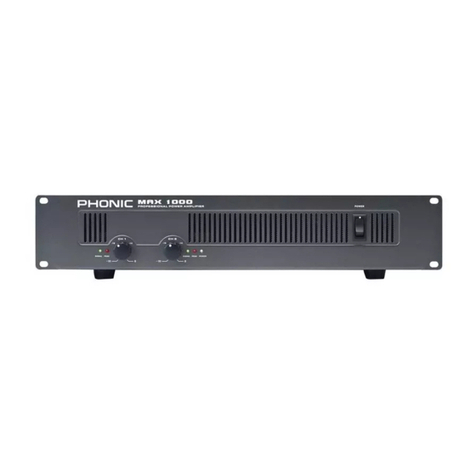
Phonic
Phonic MAX 1000 User manual
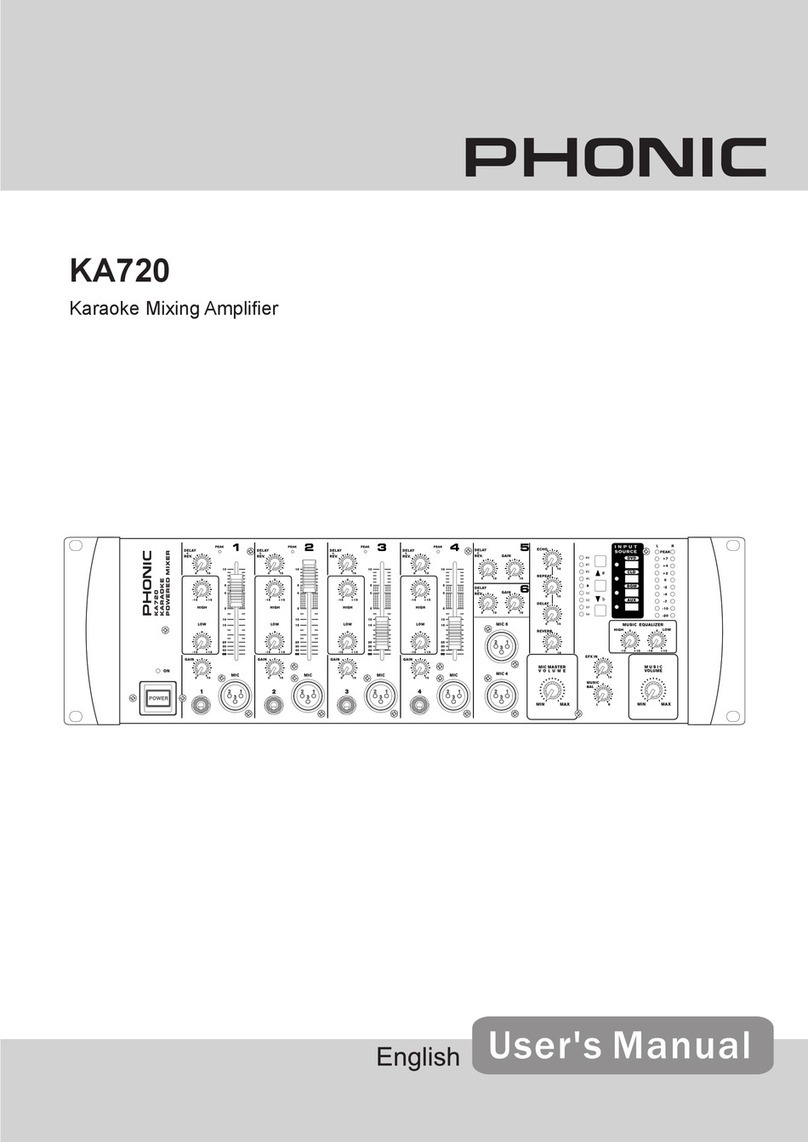
Phonic
Phonic KA720 User manual
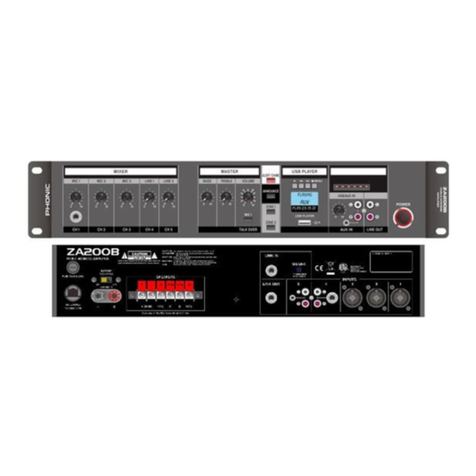
Phonic
Phonic ZA200B User manual
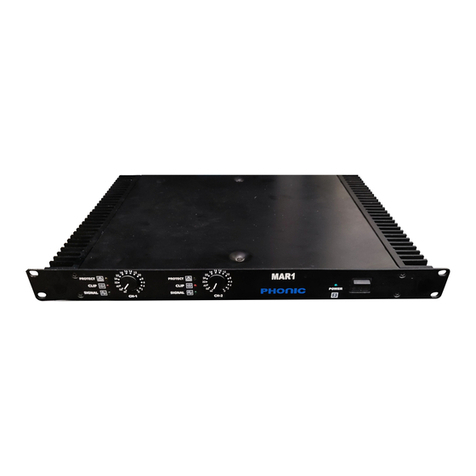
Phonic
Phonic MAR1 User manual
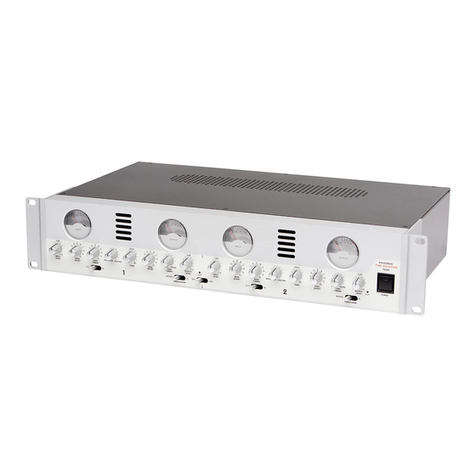
Phonic
Phonic T8300 User manual
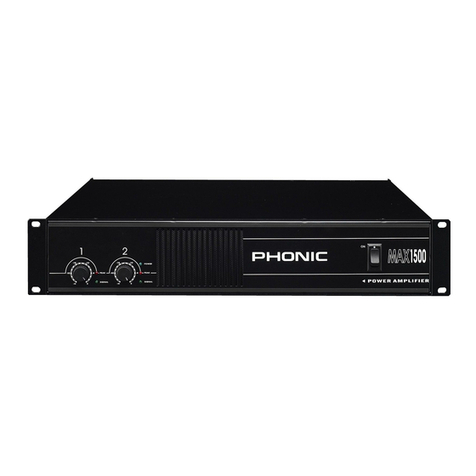
Phonic
Phonic MAX Series User manual

Phonic
Phonic MAX 1000 User manual

Phonic
Phonic XP 600 User manual

Phonic
Phonic iAMP3020DSP User manual

Phonic
Phonic MAX 2500 plus User manual
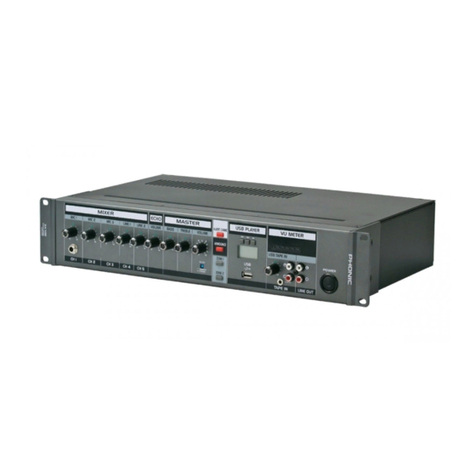
Phonic
Phonic ZA100 User manual

Phonic
Phonic XP 2000B User manual

Phonic
Phonic XP 3000 User manual
Phonic
Phonic ICON 300 User manual
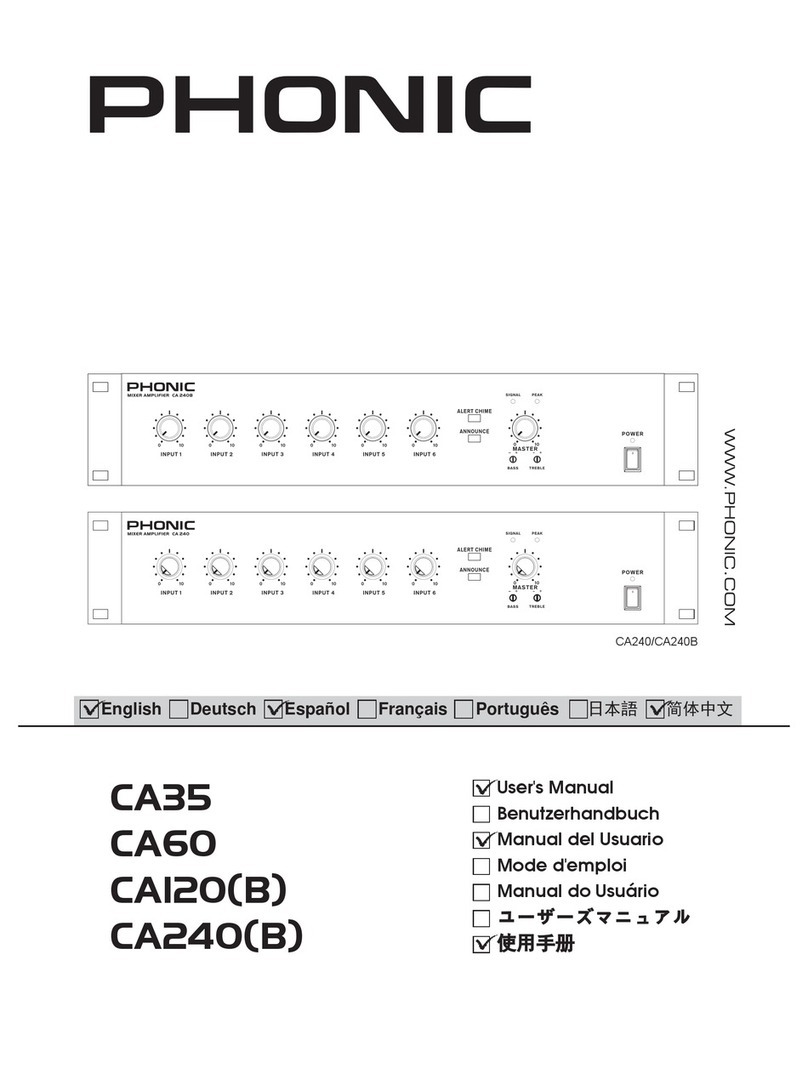
Phonic
Phonic CA35 User manual
Phonic
Phonic ICON300 User manual

Phonic
Phonic MAX 250 User manual

Phonic
Phonic XP 2000 User manual
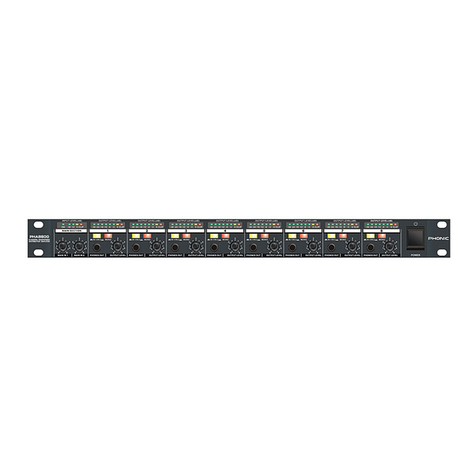
Phonic
Phonic PHA 8800 User manual
